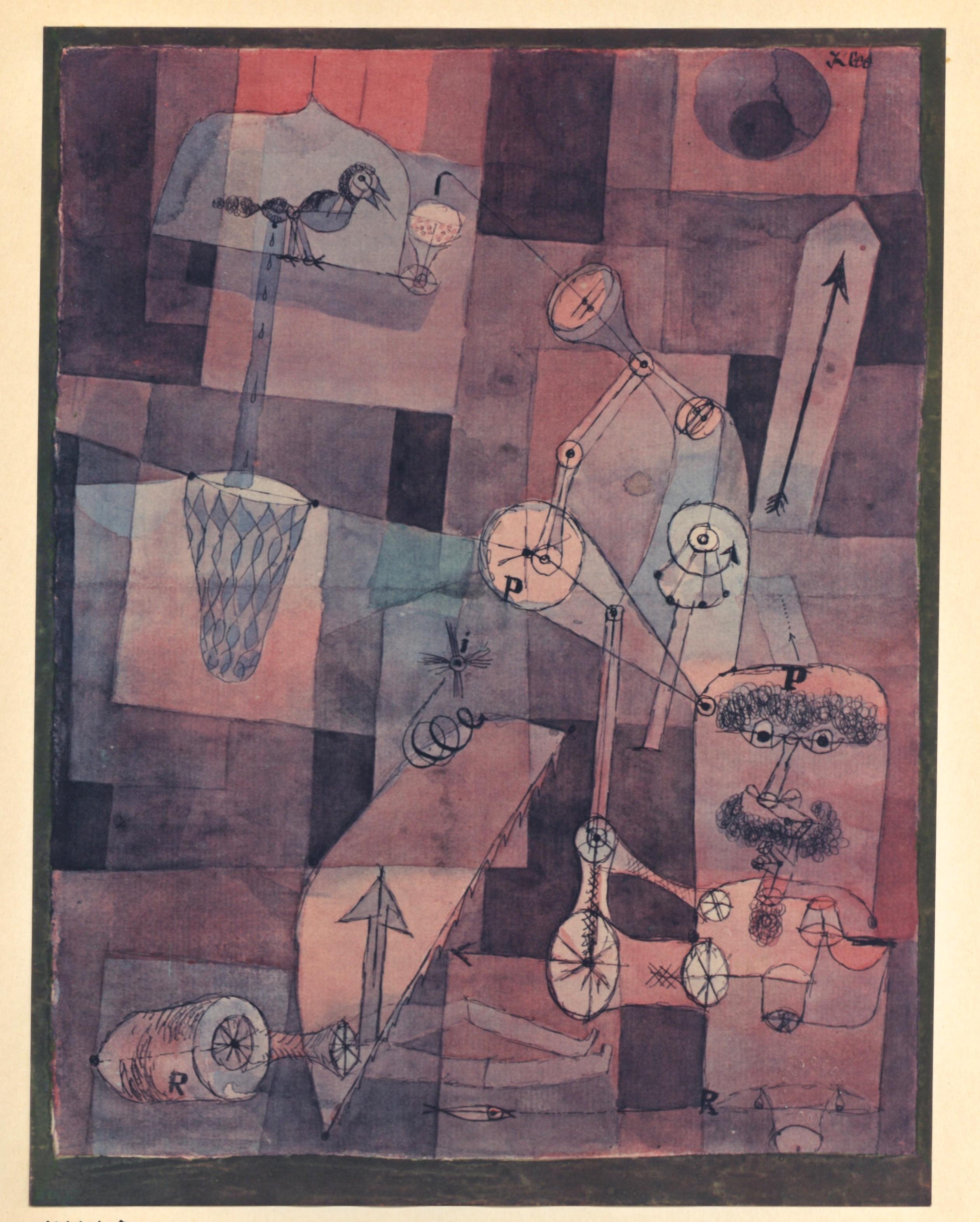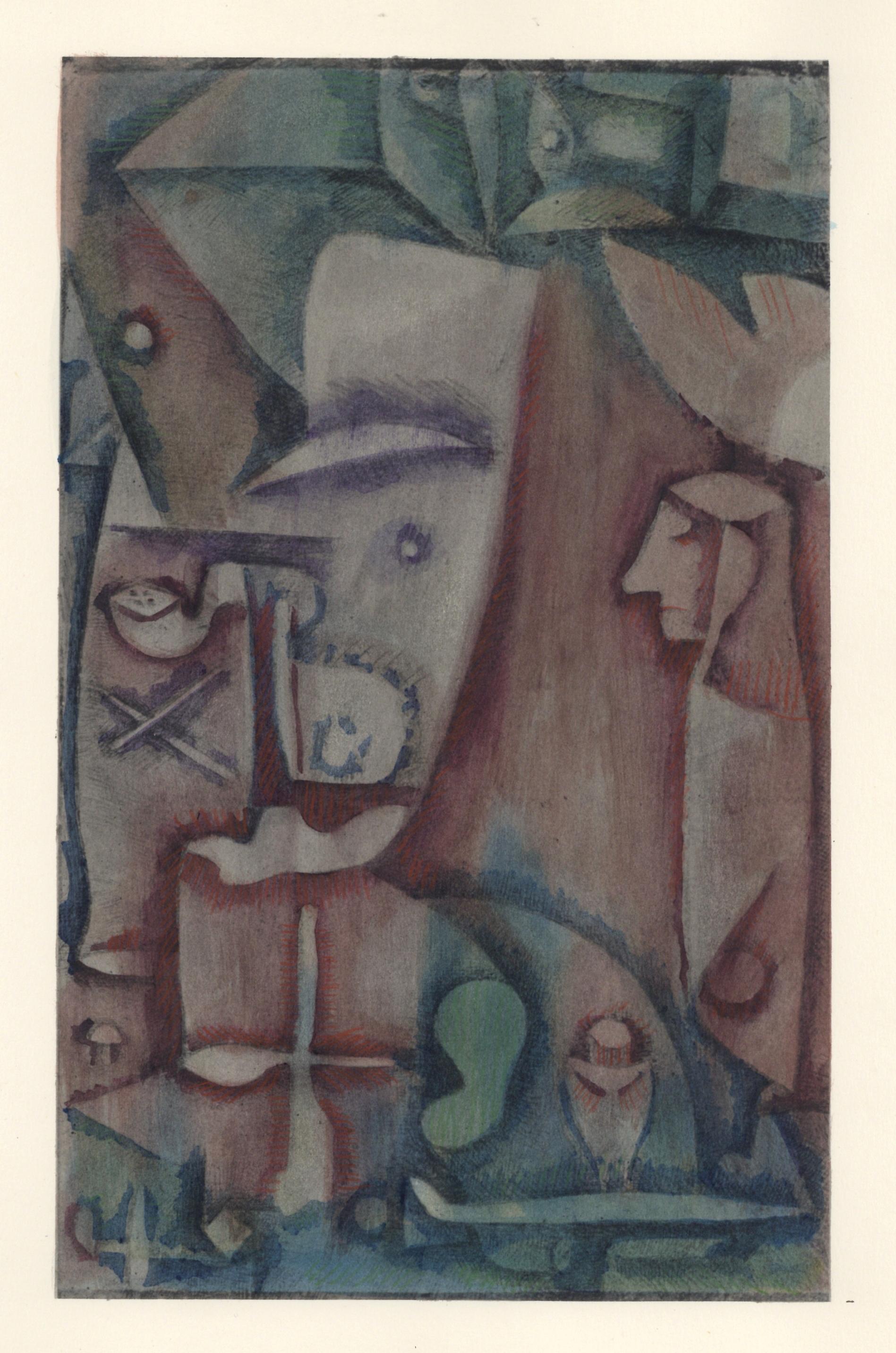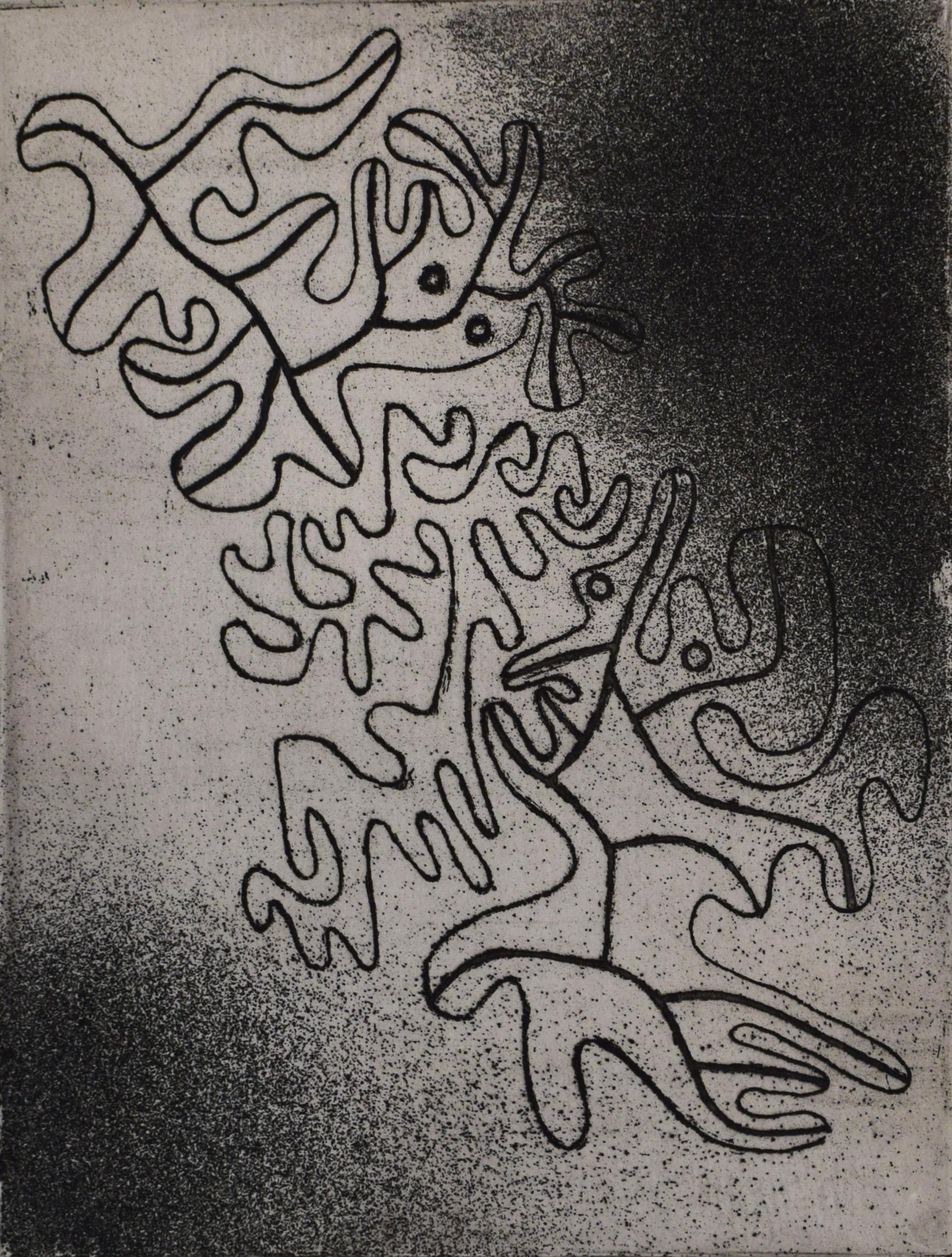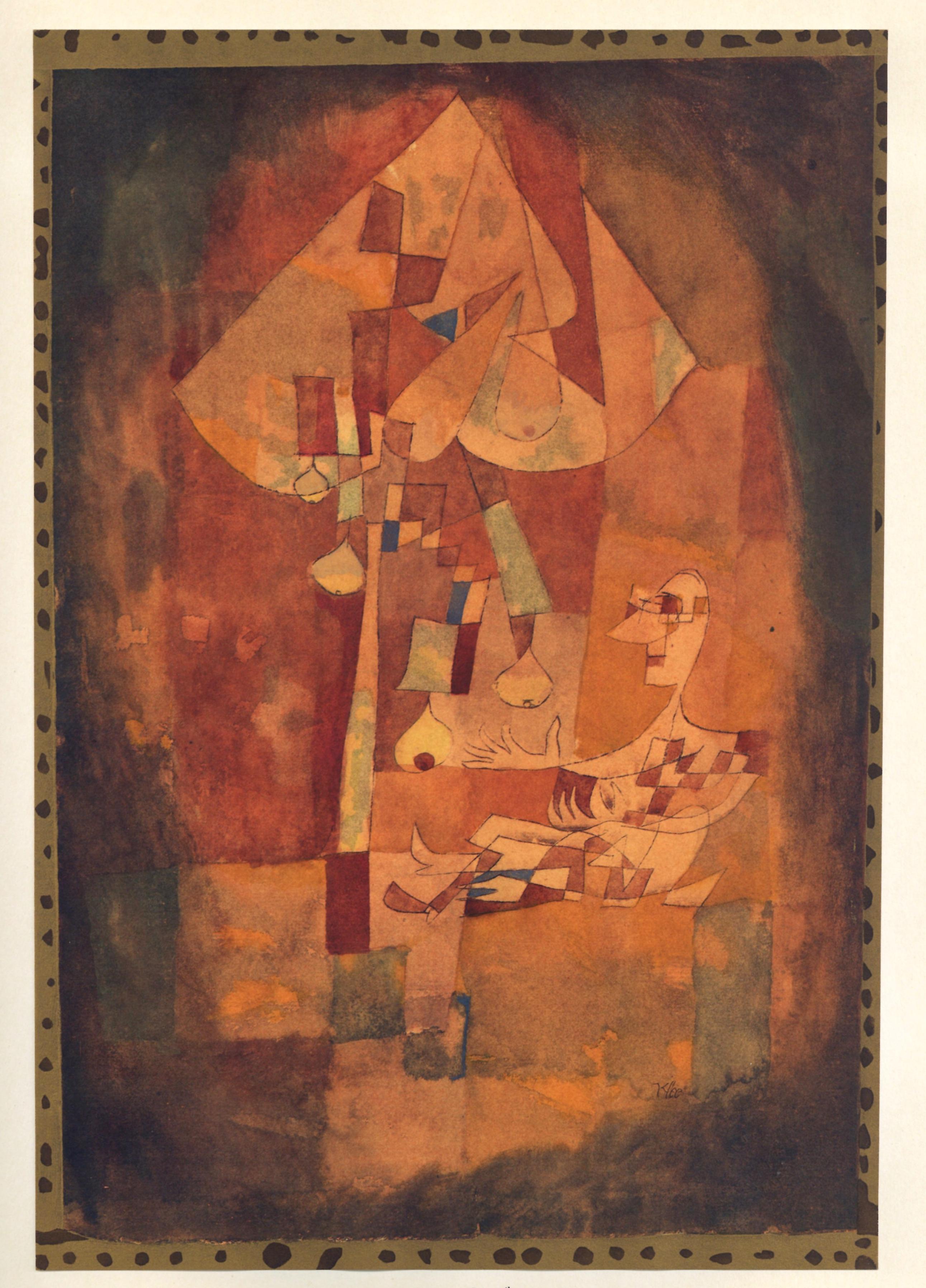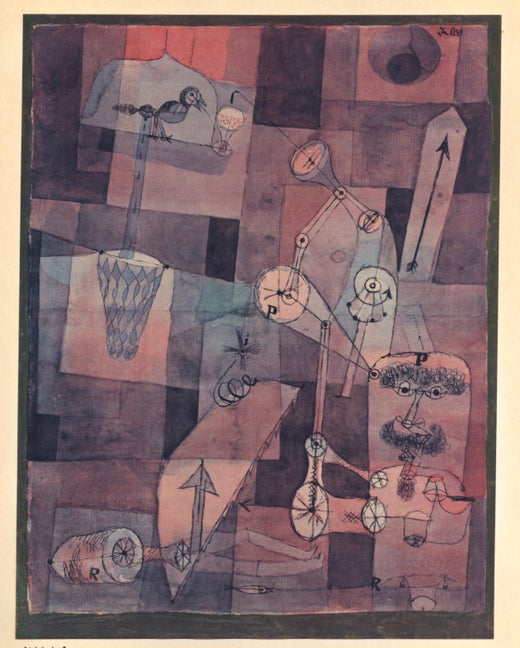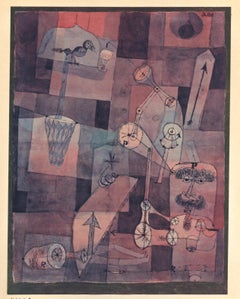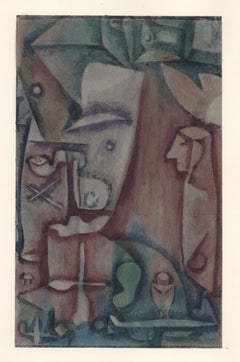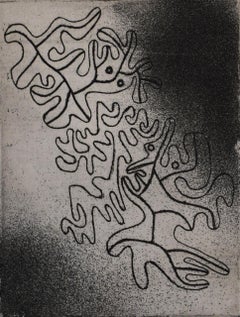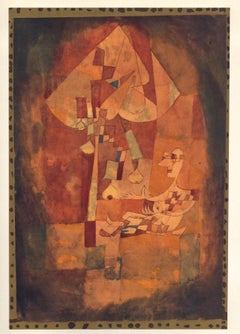Items Similar to Analysis of Various Evils - Lithograph and Stencil
Want more images or videos?
Request additional images or videos from the seller
1 of 12
(after) Paul KleeAnalysis of Various Evils - Lithograph and Stencil1964
1964
$716.53
$955.3725% Off
£535.40
£713.8725% Off
€600
€80025% Off
CA$988.34
CA$1,317.7925% Off
A$1,082.70
A$1,443.6025% Off
CHF 569.89
CHF 759.8625% Off
MX$12,922.32
MX$17,229.7625% Off
NOK 7,264.68
NOK 9,686.2425% Off
SEK 6,641.01
SEK 8,854.6825% Off
DKK 4,571.53
DKK 6,095.3725% Off
About the Item
Paul KLEE (after)
Analysis of Various Evils
Lithograph and stencil (Jacomet process)
Printed signature in the plate
On canson vellum 50 x 38.2 cm (19.6 x 14.9 in)
INFORMATION : This lithograph was edited in 1964 by Galerie Berggruen in collaboration with Felix Klee, the son of the artist. The edition was limited to 500 copies.
Very good condition, bottom left corner lightly creased
- Creator:(after) Paul Klee (1879 - 1940, German, Swiss)
- Creation Year:1964
- Dimensions:Height: 19.69 in (50 cm)Width: 15.04 in (38.2 cm)
- Medium:
- Movement & Style:
- Period:
- Condition:
- Gallery Location:Paris, FR
- Reference Number:1stDibs: LU46434527002
(after) Paul Klee
Paul Klee (1879 – 1940) was a Swiss-German artist whose highly individual style was influenced by art movements including Expressionism, Cubism and Surrealism. Klee was a natural draftsman who experimented with and eventually deeply explored color theory, writing about it extensively; his lectures "Writings on Form and Design Theory" (Schriften zur Form und Gestaltungslehre), published in English as the "Paul Klee Notebooks", are held to be as important for modern art as Leonardo da Vinci's "A Treatise on Painting" for the Renaissance. He and his colleague, Russian painter Wassily Kandinsky, both taught at the Bauhaus school of art, design and architecture. He generally worked in isolation from his peers, and interpreted new art trends in his own way. He was inventive in his methods and technique, experimenting in a huge array of different media. His works reflect an emotional lyricism, and he was unafraid to approach his expressions from a perspective of childlike innocence. They frequently allude to poetry, music and dreams, and sometimes even include words, symbols or musical notation. His extensive legacy comprises about 9,000 works of art.
About the Seller
4.9
Platinum Seller
Premium sellers with a 4.7+ rating and 24-hour response times
Established in 2010
1stDibs seller since 2016
3,824 sales on 1stDibs
Typical response time: <1 hour
- ShippingRetrieving quote...Shipping from: Paris, France
- Return Policy
More From This Seller
View AllVentriloquist Shouting in the Swamp - Lithograph and Stencil
By (after) Paul Klee
Located in Paris, IDF
Paul KLEE (after)
Ventriloquist Shouting in the Swamp
Lithograph and stencil (Jacomet process)
Printed signature in the plate
On canson vellum 50 x 38.2 cm (19.6 x 14.9 in)
INFORMA...
Category
Early 20th Century Modern Landscape Drawings and Watercolors
Materials
Lithograph, Stencil
$716 Sale Price
25% Off
Room Perspective - Lithograph and Stencil
By (after) Paul Klee
Located in Paris, IDF
Paul KLEE (after)
Room Perspective
Lithograph and stencil (Jacomet process)
Printed signature in the plate
On canson vellum 50 x 38.2 cm (19.6 x 14.9 in)
INFORMATION : This lithogr...
Category
1960s Modern Landscape Drawings and Watercolors
Materials
Lithograph
$597 Sale Price
23% Off
Winter Trip - Lithograph and Stencil
By (after) Paul Klee
Located in Paris, IDF
Paul KLEE (after)
The Man With Pear Tree
Lithograph and stencil (Jacomet process), on canson paper
Signed in the board
50 x 38.2 cm (19.6 x 14.9 in)
INFORMATION : This lithograph w...
Category
1960s Modern Figurative Prints
Materials
Watercolor
$716 Sale Price
25% Off
Mechanical Chaos - Lithograph and Stencil
By Paul Klee
Located in Paris, IDF
Paul KLEE (after)
Mechanical Chaos
Lithograph and stencil (Jacomet process)
Printed signature in the plate
On canson vellum 50 x 38.2 cm (19.6 x 14.9 in)
INFORMATION : This lithogr...
Category
1960s Modern Landscape Drawings and Watercolors
Materials
Lithograph
Landscape With Black Columns - Lithograph and Stencil
By Paul Klee
Located in Paris, IDF
Paul KLEE (after)
Landscape With Black Columns
Lithograph and stencil (Jacomet process), on canson paper
Printed signature in the plate
50 x 38.2 cm (19....
Category
1960s Modern Landscape Prints
Materials
Watercolor, Lithograph
The Man With Pear Tree - Lithograph and Stencil
By Paul Klee
Located in Paris, IDF
Paul KLEE (after)
The Man With Pear Tree
Lithograph and stencil (Jacomet process), on canson paper
Printed signature in the plate
50 x 38.2 cm (19.6 x 14.9 ...
Category
1960s Abstract Impressionist Abstract Prints
Materials
Watercolor, Lithograph
$716 Sale Price
25% Off
You May Also Like
"Analyse de diverses perversites" pochoir
By (after) Paul Klee
Located in Henderson, NV
Medium: pochoir (after the watercolor). Printed in 1964 at the atelier of Daniel Jacomet for the "Paul Klee 12 Aquarelles" portfolio and published in Paris by the Berggruen Gallery i...
Category
1960s Prints and Multiples
Materials
Lithograph, Stencil
"Liberation of the Soul (Abandon)" pochoir
By (after) Paul Klee
Located in Henderson, NV
Medium: offset lithograph with pochoir coloring. Printed in 1958 and published in Milan by Silvana Editoriale d'Arte in an edition of 200. Image size: 11 x 6 3/4 inches (280 x 173mm)...
Category
1950s Prints and Multiples
Materials
Lithograph, Stencil
Never Ending Nicht Endend - Bauhaus German
By Paul Klee
Located in London, GB
This etching is hand signed in pencil by the artist "Klee" at the lower right margin.
It is dated in pencil ‘1930’ in the lower left margin.
It is also inscribed ‘K 10’ in pencil ne...
Category
1930s Bauhaus Abstract Prints
Materials
Etching
"L'homme au poirier" pochoir
By (after) Paul Klee
Located in Henderson, NV
Medium: pochoir (after the watercolor). Printed in 1964 at the atelier of Daniel Jacomet for the "Paul Klee 12 Aquarelles" portfolio and published in Paris by the Berggruen Gallery i...
Category
1960s Prints and Multiples
Materials
Lithograph, Stencil
Bauchredner und Rufer im Moor, Cubist Pochoir Print on Rice Paper by Paul Klee
By Paul Klee
Located in Long Island City, NY
Artist: Paul Klee, After, Swiss (1879 - 1940)
Title: Bauchredner und Rufer im Moor (Ventiloque criant dans le marais)
Year: 1964 after 1920 Drawing
Medium: Pochoir on Rice Paper, Sig...
Category
1960s Expressionist Abstract Prints
Materials
Rice Paper, Stencil
$2,280 Sale Price
20% Off
Esel - Lithograph by Paul Klee - 1925
By Paul Klee
Located in Roma, IT
Lithograph on imitation Japan paper, from the book Monatshefte für Bücherfreunde und Graphiksammler, edited by Hans Loubier and Willy Kurth, 1st year 1925. Leipzig, Klinkhardt & Bier...
Category
1920s Modern Figurative Prints
Materials
Lithograph
